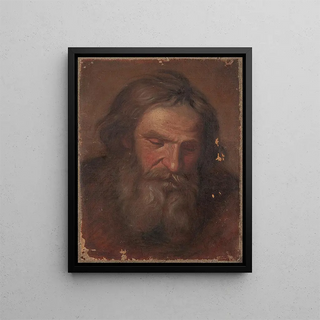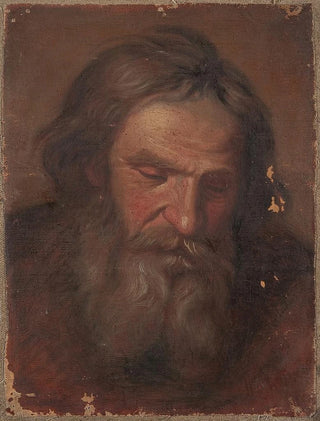Art print | Study of the Head of an Old Man - Szymon Czechowicz


View from behind

Frame (optional)
Szymon Czechowicz's "Study of the Head of an Old Man" stands as a true testament to the artistic virtuosity of the 18th century. This striking depiction of an aged face, imbued with wisdom and humanity, invites viewers to a profound contemplation. By scrutinizing every detail, one perceives not only the technical mastery of the artist but also a poignant intimacy that transcends time. The art print of this work allows one to approach the very essence of life, aging, and human experience, while offering a window into a rich and complex artistic world.
Style and uniqueness of the work
Czechowicz is distinguished by his skill in capturing the nuances of human expression. In "Study of the Head of an Old Man," every wrinkle, every shadow is carefully crafted to evoke emotional depth. The subtle interplay of light and darkness creates a striking contrast that highlights the facial features, revealing a story inscribed in the flesh. The artist does not merely depict a face; he creates a true portrait of the soul. The texture of the skin, the reflections in the eyes—all contribute to bringing this character to life, as if he were about to animate. This realistic, almost tactile approach demonstrates a unique artistic sensitivity that invites reflection on the passage of time and the human condition.
The artist and his influence
Szymon Czechowicz, an emblematic figure of Polish art, mastered the balance between tradition and innovation throughout his career. Trained in the workshops of great masters, he absorbed Baroque influences while developing a personal style that is uniquely his own. His work is marked by a constant pursuit of beauty and harmony, but also by a deep understanding of human emotions. As a court artist, he had the opportunity to work with numerous patrons, which allowed him to spread his art beyond Poland's borders. His legacy endures today, inspiring many contemporary artists to explore themes of life, aging, and the human experience.

Matte finish

View from behind

Frame (optional)
Szymon Czechowicz's "Study of the Head of an Old Man" stands as a true testament to the artistic virtuosity of the 18th century. This striking depiction of an aged face, imbued with wisdom and humanity, invites viewers to a profound contemplation. By scrutinizing every detail, one perceives not only the technical mastery of the artist but also a poignant intimacy that transcends time. The art print of this work allows one to approach the very essence of life, aging, and human experience, while offering a window into a rich and complex artistic world.
Style and uniqueness of the work
Czechowicz is distinguished by his skill in capturing the nuances of human expression. In "Study of the Head of an Old Man," every wrinkle, every shadow is carefully crafted to evoke emotional depth. The subtle interplay of light and darkness creates a striking contrast that highlights the facial features, revealing a story inscribed in the flesh. The artist does not merely depict a face; he creates a true portrait of the soul. The texture of the skin, the reflections in the eyes—all contribute to bringing this character to life, as if he were about to animate. This realistic, almost tactile approach demonstrates a unique artistic sensitivity that invites reflection on the passage of time and the human condition.
The artist and his influence
Szymon Czechowicz, an emblematic figure of Polish art, mastered the balance between tradition and innovation throughout his career. Trained in the workshops of great masters, he absorbed Baroque influences while developing a personal style that is uniquely his own. His work is marked by a constant pursuit of beauty and harmony, but also by a deep understanding of human emotions. As a court artist, he had the opportunity to work with numerous patrons, which allowed him to spread his art beyond Poland's borders. His legacy endures today, inspiring many contemporary artists to explore themes of life, aging, and the human experience.






